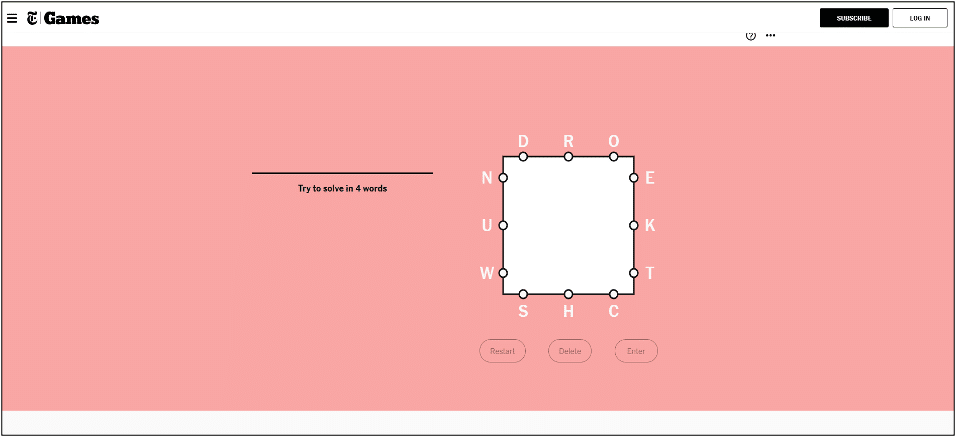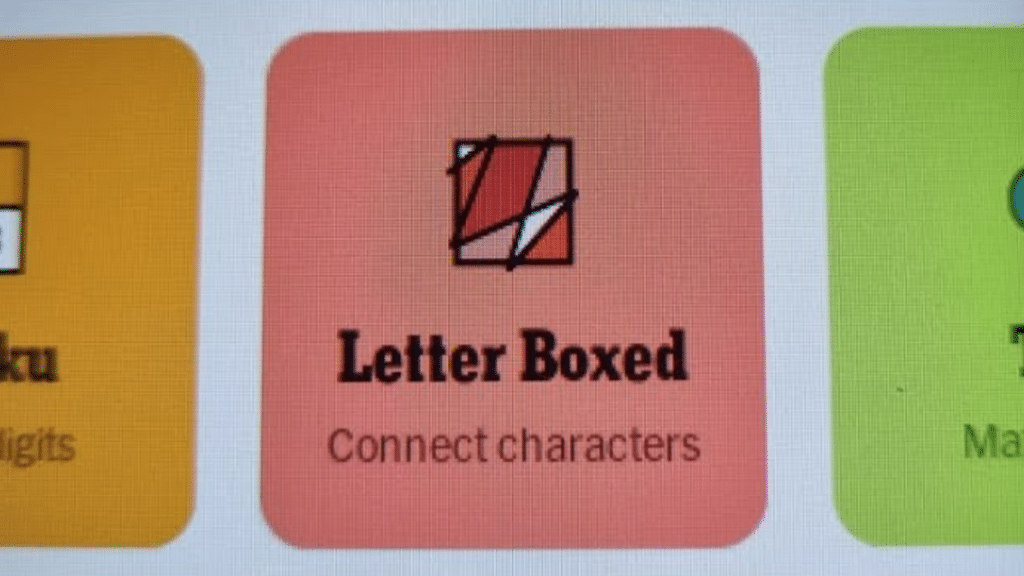Those of you who love word games that challenge your mind and vocabulary may have encountered Letter Boxed – the New York Times’ addictive puzzle. Initially, it may seem straightforward, but the game’s unique rules and constraints make it a delightful brain teaser.
If you have just started playing NYT Letter Boxed, there are a few things you should know. They will make you a pro player in no time, and you will be able to solve every day’s puzzle instantly.
In this article, we cover everything you need to know about how to play Letter Boxed, including:
- What is Letter Boxed?
- How to Play NYT Letter Boxed?
- Strategies & Tips to Solve Letter Boxed Puzzle
- Scoring System
It won’t take much time to read everything. Spare a few minutes and read till the end. Let’s get started.
What is Letter Boxed Game?

Letter Boxed is a daily word puzzle game provided by NYTimes. It consists of 12 letters arranged around a square, and you are provided with 12 letters. By connecting adjacent letters, you will form words, following the rule that no consecutive letters must come from the same side of the square, which means each word will alternate between sides. All 12 letters must be used at least once. Words must be at least three letters long, and the last letter of each word must begin the next word. Every day, a new puzzle is released, providing players with a new challenge.
How to Play NYT Letter Boxed?
Here comes the main thing, which is how you play Letter Boxed. Below, we have given a clear explanation for that. Check it out:
1. Understand the Board
The game board is a square with three letters on each of its four sides, totaling 12 letters. You must form words by connecting adjacent letters, but there’s a catch:
- No consecutive letters can be from the same side of the square. For example, if you start with a letter on the top side, your next letter must come from either the left, right, or bottom side.
- Each word must be at least three letters long.
- The last letter of each word must be used to start the next word.
- All 12 letters must be used at least once to complete the puzzle.
2. Form Words Strategically
You can start by identifying the prefixes and suffixes that can be used to form longer words. For instance, the letter “S” might lead to words like “see,” “set,” and “sent.” The more words you can use in advance, the less you will have to use.
3. Aim for Fewer Words
The game often provides a target number of words to aim for, typically between 4 and 6. Although it’s OK to solve the puzzle with more words than are recommended, challenging yourself to solve it with fewer words increases the difficulty and satisfaction.
4. Use the “Delete” Feature Wisely
To backtrack and try different combinations of words without restarting the entire puzzle, you can click on the “Delete” button when you realize that your current word choices do not lead to an optimal solution.
Strategies to Solve Letter Boxed Puzzle
As an addition, here you will also find some strategies that can assist you in solving the Letter Boxed NYT in an instant:
Word Formation Techniques:
In Letter Boxed, word formation is all about creativity and strategy. Start by identifying smaller, common words that are easy to form, then look for ways to build on those words by adding prefixes or suffixes.
For example, adding “un” to “done” makes “undone” or “ing” to “run” makes “running.” Consider combining smaller words into compound words like “snow” and “man” to create “snowman.” This approach helps you maximize the use of letters and quickly form more words, creating a smoother and faster path to completing the puzzle.
Using All Letters:
To solve a Letter Boxed puzzle efficiently, it’s important to make sure all 12 letters are used. Focus on the letters that haven’t been used yet to avoid getting stuck at the end. Plan your words so that the letters are spread out across the puzzle.
Prioritize using difficult or less common letters early on, and try to form longer words that incorporate multiple unused letters. By thinking ahead and making sure each word connects smoothly, you can ensure that all letters are used without getting left with any leftovers at the end.
Using a Letter Boxed Solver:
For those moments when you’re stuck or curious about alternative solutions, a Letter Boxed Solver can be a helpful tool. Such an online tool analyzes the given letters and generates possible word combinations that adhere to the game’s rules.
Certain tools like Letter Boxed Solver by AIWordSolver also provide this feature, where you don’t have to input the letters manually, and it will automatically fetch them from today’s NYT puzzle. This can help you save time and find the answer words in just a single click.
While they can provide insights and help you learn new strategies, it’s best to use them sparingly to maintain the challenge and satisfaction of solving the puzzle on your own.
Practice and Improvement:
Like any skill, getting better at Letter Boxed requires consistent practice. The more you play, the more familiar you become with common word patterns and letter combinations. Regularly playing the game helps you think quicker and spot possible words faster.
As you gain experience, you’ll start recognizing the best ways to form words with the given letters and develop strategies for using all 12 letters efficiently. Reviewing completed puzzles also helps, as you can learn from the solutions and refine your approach for future puzzles.
Letter Boxed Scoring System
Unlike some word games, Letter Boxed doesn’t have a traditional scoring system. Instead, it focuses on the number of words used to complete the puzzle. The fewer words you use, the more efficiently you’ve solved the puzzle. The game often provides a target number of words to aim for, and completing the puzzle in fewer words is considered an achievement.
Wrapping Up
Here we come to the end of this article.
Recapitulation…
The NYT Letter Boxed puzzle is an engaging and unique challenge for word enthusiasts. You can improve your skills and enjoy the satisfaction of solving each puzzle if you understand the rules, use strategic word formation, and practice regularly. The endless possibilities of fun and mental exercise in Letter Boxed are endless, whether you play it solo or with friends.
